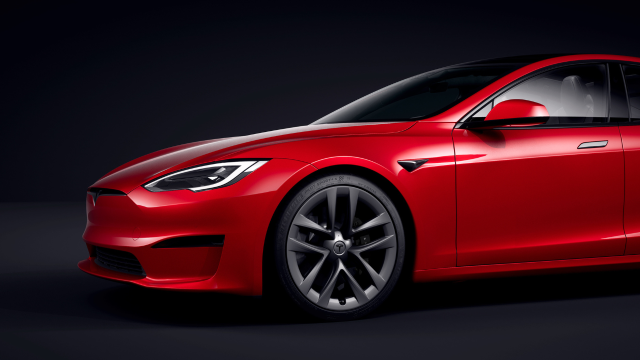The Tesla Model S and Model X have had their prices cut in the U.S., while the latest version of the high-performance electric sedan has been spotted in Australia in a rare sighting.
In the most recent change, Tesla has cut the U.S. Model S and Model X prices by between 4 per cent and 9 per cent depending on the exact vehicle variant.
Both Model S versions are now $US5,000 (about $AU6,941) cheaper — equal to a 5 per cent decrease for the standard, which now costs $US89,000 ($123,550). While the Model S’s higher performance “Plaid” variant is now $US109,990 ($152,688), equal to a 4 per cent decline.
The cuts to the Model X crossover SUV were even steeper — both versions have been slashed by $US10,000 ($13,882). The standard is now $US99,990 ($138,806), equal to a 9 per cent cut. ThePlaid variant is now $US109,990 ($152,688), equal to an 8 per cent reduction.
Meanwhile, over in Australia, the 2023 Tesla Model S has recently been spotted on the road, following a two-year absence of local deliveries, as reported by Drive. If you attempted to buy a Tesla Model S or Model X through Tesla today, you’d be unable to see a listed price and would only be able to pay a preorder fee.
The vehicle spotted (and posted on Facebook) is what’s currently having its price cut in the U.S., with price changes already visible on the U.S. website.
BREAKING: @Tesla has reduced the starting prices of the Model S & Model X in the US.
• Model S AWD: $89,990 (from $94,990)
• Model S Plaid: $109,990 (from $114,990)
• Model X AWD: $99,990 (from $109,990)
• Model X Plaid: $109,990 (from $119,990)Model S/X Plaid are now the… https://t.co/VnACjToNMG pic.twitter.com/YACFu3BCS2
— Sawyer Merritt (@SawyerMerritt) March 6, 2023
Back in January, Tesla lowered its car prices in the U.S. and Europe by as much as 20 per cent depending on vehicle model and location, with prices fluctuating in Australia as well.
Earlier cuts impacted all of the company’s models, and if you include those changes, then the cost of a Model S or Model X has fallen by between 14 per cent and 21 per cent overseas since the beginning of 2023, according to a report from Bloomberg.
The price changes come less than week after Tesla’s Investor Day and Musk’s presentation of the company’s “Master Plan 3”. During that event, the billionaire highlighted numerous cost reduction strategies Tesla had developed in its vehicle production process — making it cheaper for the company to manufacture its cars. Musk also indicated that earlier January price cuts had bolstered customer desire for vehicles.
“We found that even small changes in the price have a big effect on demand, very big,” the CEO said.
Presumably, this most recent round of reductions is intended to increase demand, once again. Perhaps the boost in Model X and S orders didn’t meet expectations or match the appetite for the company’s other cars.
“The desire for people to own a Tesla is extremely high. The limiting factor is their ability to pay,” the CEO said. Musk added that the desire to own one of his company’s cars is “indistinguishable from infinite” and that, as Tesla lowers its prices demand will “go crazy.”
Though, even with thousands of dollars taken off Tesla price tags, the vehicles remain prohibitively expensive for most. The cheapest Tesla model, the Model 3, starts at $64,300 in Australia. Meanwhile, competitors like BYD, GWM and MG are undercutting that price by quite a lot.
In the original 2006 Tesla Master Plan, Musk promised that his company would work to produce progressively cheaper electric vehicles, making them accessible to a broad array of consumers. In recent years, the billionaire has hinted at a possible $US25,000 ($34,705) Tesla EV — often referred to as the “Model 2”. However, that price point still seems to be very far off.
This article has been updated since it was originally published.
